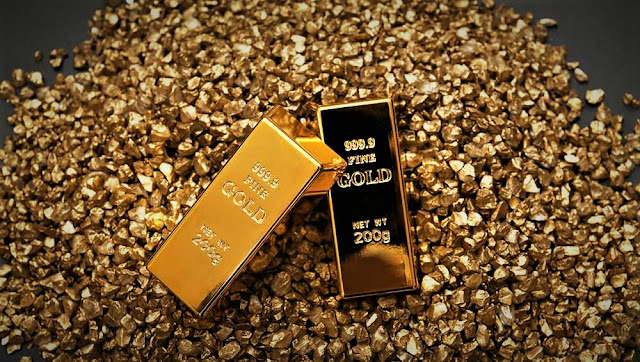Data and realities about gold
Data and realities about privateer goods gold and a significant part in microelectronic circuits. Gold has been utilized in gems making since no less than 4000 BC, and it has simply been utilized to treat malignant growth in ongoing many years. It's in the bowl where the rainbow closes (as strange notion claims) and in the paint of space explorer covers.
What is this component that flawlessly spans the antiquated and the advanced legends and sciences? It is gold. Gold, is component number 79 in the request for the intermittent table of synthetic components, and the most renowned for us. The image for gold is known as Au (got from the Latin name for gold: Aurum).
Realities about gold:
Nuclear number of gold (number of protons in the core): 79. Nuclear image (on the intermittent table of the components): Au.
Nuclear weight (normal mass of a molecule): 196.9665 nuclear mass units.
The thickness of gold: 19.3 grams per cubic centimeter. Its state at room temperature: strong.
Gold's dissolving point: 1947.7 degrees Fahrenheit (1064.18 degrees Celsius). Edge of boiling over: 5,162 degrees Fahrenheit (2850 degrees Celsius).
Number of isotopes (molecules of similar component with an alternate number of neutrons): Between 18 and 59, many misleadingly made gold isotopes are steady for milliseconds before they rot into different components. Only one of the isotopes is steady.
The most well-known isotope: Au-197, which is 100 percent normally happening gold.
Glossy component:
People enriched themselves with gold for almost 4,000 B.C., as indicated by the National Mining Association. From Eastern Europe to the Middle East to the burial chambers of the Egyptian pharaohs, gold shows up all through the old world. A Stone Age lady was observed covered on the edges of London wearing a gold lace around her neck. The Celts (people groups and a gathering of societies and dialects that existed in Europe for a very long time B.C.) in the third century B.C. wore gold teeth in their mouths. A Chinese lord who passed on in 128 BC was likewise viewed as covered with plated chariots and great many different assets.
Gold is a glossy, pliable metal, which makes it a decent metallic material. In compound terms, gold is a change metal. Progress metals are interesting in that they can bond with different components utilizing the two furthest orbitals of electrons around the core, not only one (the contrarily charged particles circling the core). This happens on the grounds that the enormous number of electrons in the change metals disrupts the precise plan of electrons in orbitals around the core.
Every one of the gold in hoops, sleeve buttons, gold gems, and electronic parts being used today started in space: According to a 2011 paper in the diary Nature, a shooting star barrage around 4 billion years prior acquired 20 billion (20,000,000,000,000,000,000,000,000). ) huge loads of gold and other valuable metals found in space rocks back to Earth. Following the beginning of gold takes us further. A recent report in Astrophysical Journal Letters observed that almost certainly, all the gold in the universe was shaped during impacts of dead stars known as neutron stars.
The veins of gold mined from the beginning brought about by hot liquids that course through gold-bearing rocks, catching the gold and moving it in crevices, as indicated by the American Museum of Natural History.
What is a carat? What's more, for what reason is it utilized while discussing gold:
Most gold gems isn't made of unadulterated gold. How much gold in a jewelry or ring is estimated on the karat scale. Unadulterated gold is 24 karat. Gold bars safeguarded at Fort Nox and different areas all over the planet are 99.95 percent unadulterated gold. , 24 karat.
As metals are added to gold during adornments making, the gold turns out to be less delightful and the quantity of carats diminishes. For instance, 12 karat gold contains half gold and half different metals and amalgams by weight.
The word karat comes from the carob seed. In old Asian marketplaces, seeds were utilized to adjust scales that deliberate the heaviness of gold.


Comments
Post a Comment